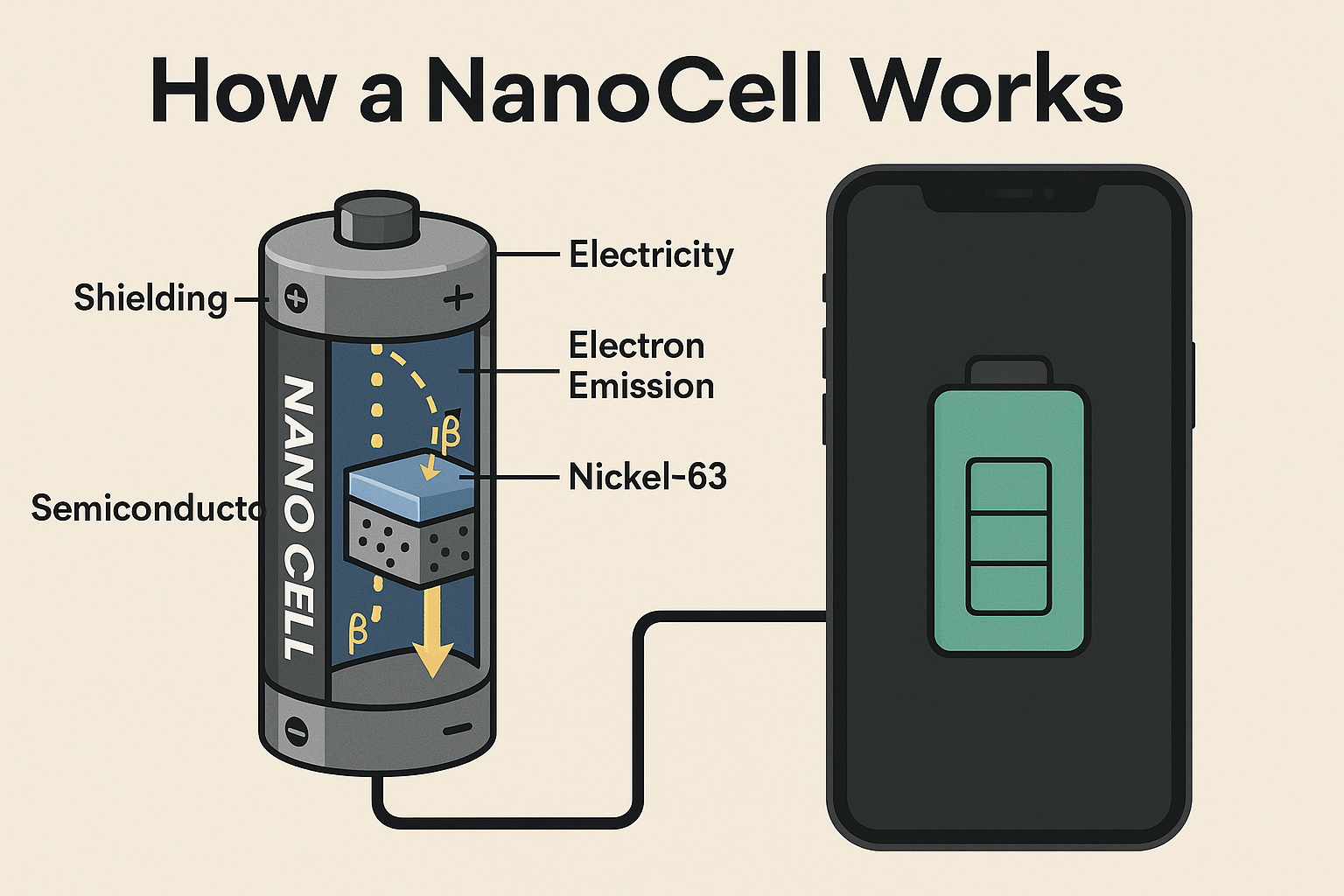
In a seismic leap for the electronics industry, nuclear batteries—once the stuff of science fiction—have officially entered the consumer market, promising to upend the way we power everything from smartphones and laptops to entire homes.
Dubbed “NanoCells,” these revolutionary power sources are powered by safe, solid-state nuclear technology and are small enough to fit in the palm of your hand. Unlike traditional lithium-ion batteries that degrade and require frequent recharging, NanoCells hold a single, steady charge for the entire lifespan of the device—up to 15 years in some models.
No More Charging, Ever
Major electronics manufacturers including Apple, Samsung, Dell, and Lenovo have announced the first wave of devices equipped with NanoCells. The upcoming smartphone models, slated for release in late 2025, will ship with a permanently sealed battery that requires no charging port or wireless charging pad. Laptops with the same technology will be able to operate continuously for over a decade without a single recharge.
“The end of the charger era is here,” said Michelle Kwon, VP of Innovation at HelixCore, one of the companies behind the battery’s development. “We’ve created a power source so efficient and stable, your device’s power supply will outlive your device itself.”
Standardization: The New AA of the Nuclear Age
In addition to embedded batteries, a standardized form of the NanoCell is being introduced, similar in size and function to legacy AA and AAA batteries. These can be used in a wide range of consumer electronics—from flashlights to smart remotes—and easily transferred to new devices as old ones become obsolete.
These modular nuclear cells are designed for plug-and-play convenience, and early versions boast up to 20 years of power with no degradation. A global standard is being coordinated by the International Power Standards Consortium (IPSC) to ensure cross-brand compatibility and safe recycling.
Powering Homes, Not Just Gadgets
Perhaps even more disruptive is the debut of the HomeCore Reactor, a scaled-up version of the NanoCell for residential use. Roughly the size of a suitcase, this home power unit can independently power an average household for up to 25 years without a single connection to the electrical grid.
This development could spell the end of traditional utility infrastructure, including aging electrical poles and centralized power plants. Early pilot programs in Arizona, Finland, and South Korea have already begun phasing out public electricity in favor of individual energy independence.
Safety, Sustainability, and Skepticism
The technology is based on solid-state beta-voltaic principles, utilizing stable isotopes like Nickel-63 encased in non-toxic, fail-safe shielding materials. HelixCore and its partners emphasize that the units are radiation-safe, recyclable, and pose no meltdown risk.
However, critics are calling for greater transparency and regulation. Environmental advocacy groups have raised concerns about end-of-life disposal and the potential for black-market misuse.
“We’re entering uncharted territory,” warned Dr. Elena Vasquez, an energy policy expert. “The decentralization of power—literally—could change the global geopolitical balance, not to mention how we think about sustainability.”
The Dawn of the Always-On Era
Despite concerns, consumer enthusiasm is off the charts. Pre-orders for the first nuclear-powered phones have already sold out, and demand for the HomeCore system is overwhelming production capacity.
As the first devices roll out this summer, one thing is certain: the age of low-battery anxiety is over. The world is about to get a lot brighter—and it won’t need to be plugged in.